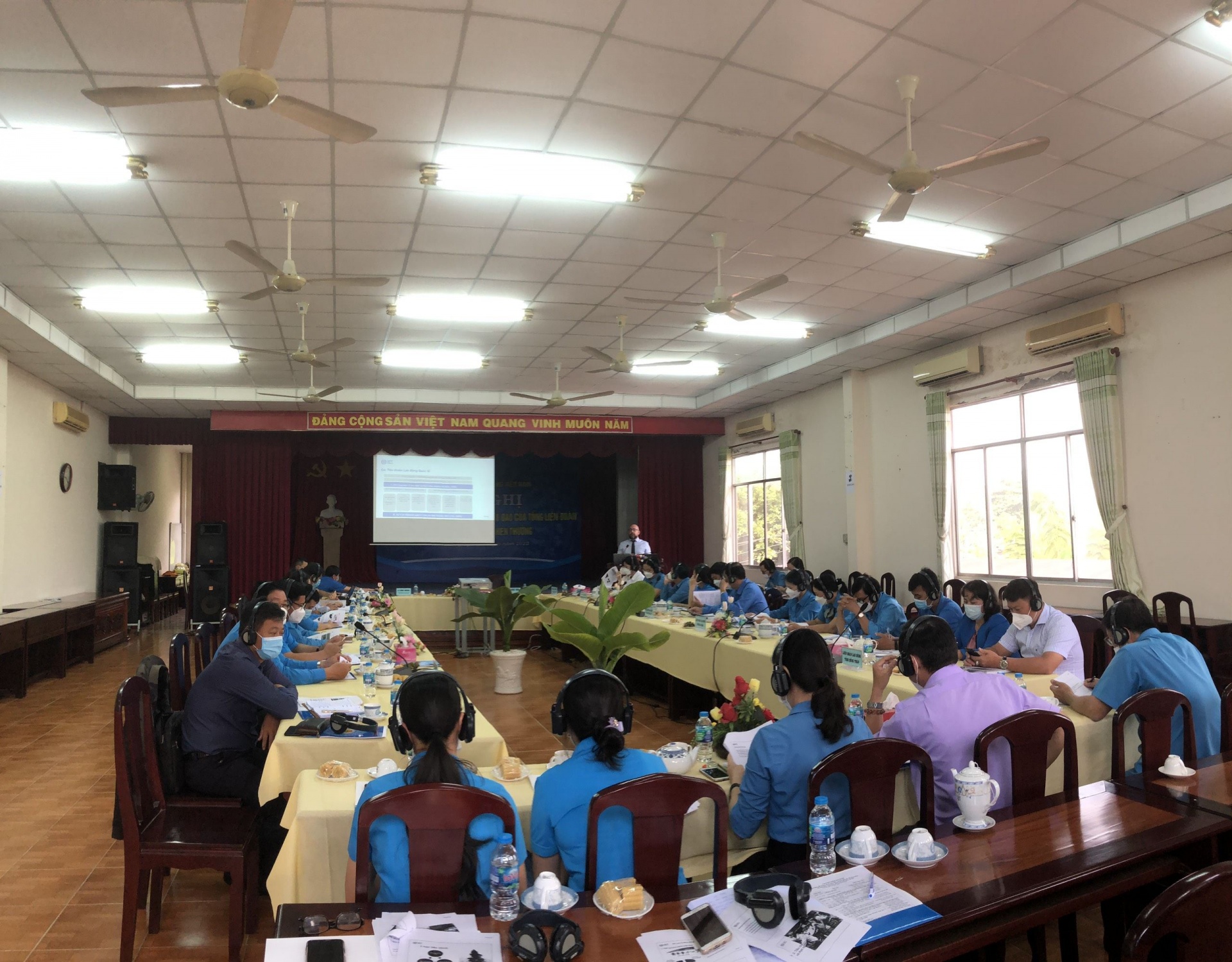Law to provide workers with stronger protection
 |
| Views being shared during the conference |
The meetings were held from March 11 to 25 and were an opportunity for the ILO to discuss the concerns of its constituents about social insurance. It shared technical insights into some of the policy reforms that are under consideration by the government.
The discussions culminated in a workshop in Ho Chi Minh City on March 25 where the ILO and the Vietnam General Confederation of Labour (VGCL) exchanged views about the future of the country’s social protection.
Le Dinh Quang, deputy head of VGCL’s Policy and Law Department emphasised, "The amendment to the upcoming Social Insurance Law should be comprehensive and synchronous."
Quang also said, “It must become a flexible, multi-tiered, and integrated system based on international labour standards. At the same time, the reform should create fairness, equality, and sustainability by finding a balance between contributions and benefits."
The ILO underlined that, for the country to meet the targets set out in Party Resolution No.28-NQ/TW, it must continue to create a true multi-tiered social protection system, with increased alignment between its contributory and non-contributory components.
Such efforts are vital in providing social protection to the large groups in society who currently cannot benefit from these programmes, including informal workers.
“Reaching these goals will require not only strong social dialogue and political will but also a significant increase in the government’s investment in social protection,” said André Gama, ILO Vietnam’s Social Protection Programme manager.
He stressed, “This investment is essential to ensure support for those in need, but also as a sustainable and inclusive engine for economic growth by enabling the nation to focus on its most valuable asset – its people.”
Closing the workshop, the ILO and VGCL agreed to continue their collaboration during the revision of the Social Insurance Law to guarantee that the new policy results from an open consultation process that takes workers’ priorities into consideration.
What the stars mean:
★ Poor ★ ★ Promising ★★★ Good ★★★★ Very good ★★★★★ Exceptional
Related Contents
Latest News
More News
- Protect what’s next: towards a future free from meningococcal group B disease (December 05, 2025 | 18:00)
- New ILO report offers policy recommendations for disability inclusion (December 04, 2025 | 15:18)
- Maternal job loss may affect children’s mental health, research shows (December 03, 2025 | 19:11)
- Women lead Vietnam’s shift to climate-resilient agriculture (December 03, 2025 | 19:10)
- Experts highlight unpaid care work as key barrier to gender equality (December 03, 2025 | 15:15)
- Opportunities and inequalities for women workers in Vietnam's garment industry (December 03, 2025 | 09:00)
- Vietjet flights carry love to devastated central region (November 28, 2025 | 11:35)
- New initiative to boost the fight against domestic violence (November 26, 2025 | 10:00)
- South Korea funds IOM relief for Vietnam’s typhoon-affected communities (November 24, 2025 | 15:33)
- AI and human-centred values set to shape the future of HR in Vietnam (November 21, 2025 | 18:04)

 Tag:
Tag:





















 Mobile Version
Mobile Version